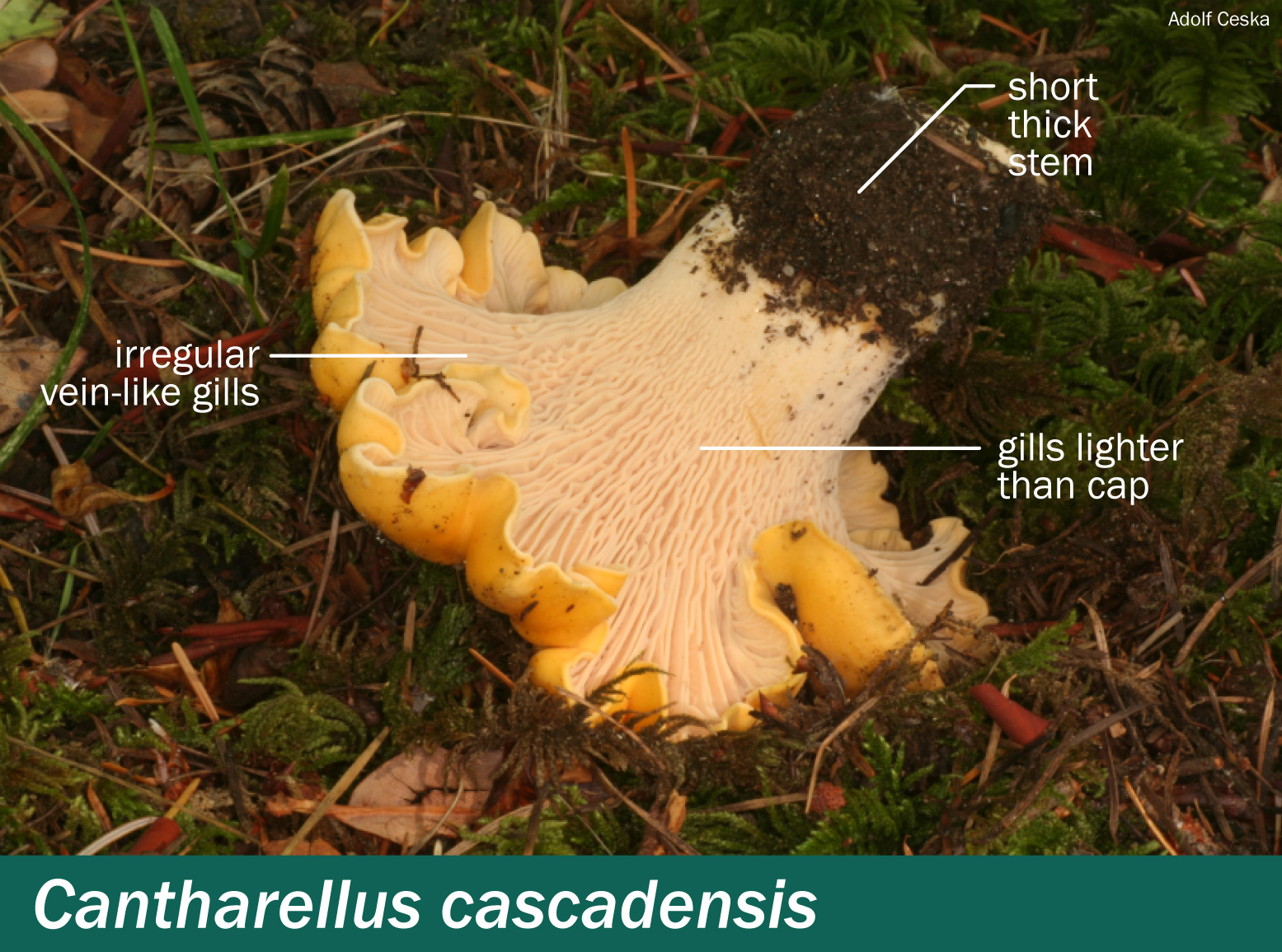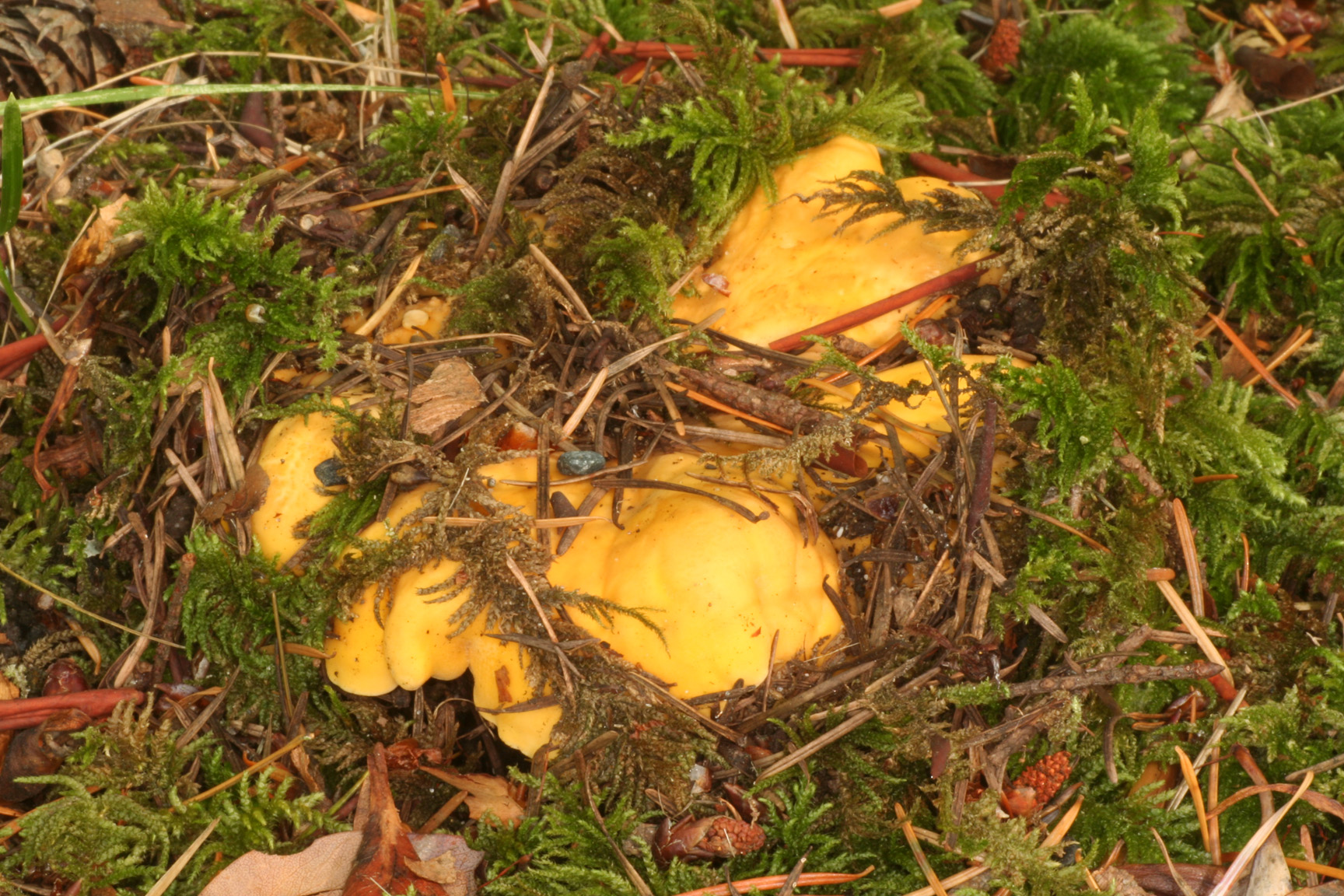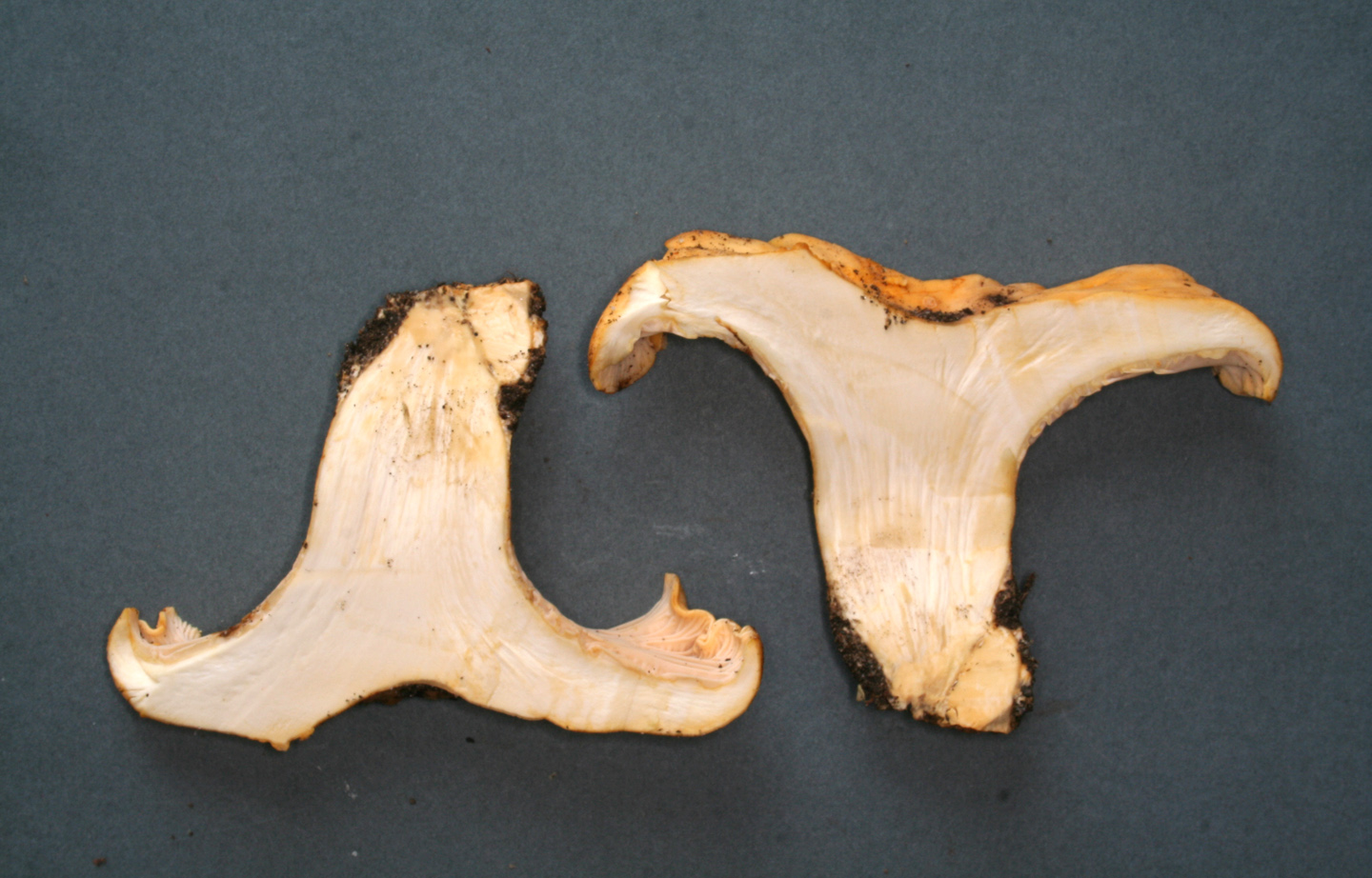Cantharellus cascadensis — Hybrid chanterelle
Left image: Cantharellus cascadensis2; egg-yolk yellow cap appearing from moss, photograph by Adolf Ceska.
Right image: Cantharellus cascadensis2 cut in half, photograph by Adolf Ceska.
Odour: Not distinctive to fruity. Taste indistinct.
Caps: 4–12 cm in diameter. Starting out convex with a margin that is rolled towards the stem, but then becoming vase-like and wavy with a thin margin that stays bent outwards. The colour is bright clear yellow to light orange-yellow.
Gills: Decurrent, shallow, light-coloured veins appearing as ridges that extend down from the edge of the cap to the top of the stem, easily peeled from cap. Chanterelle veins are thicker and further apart than the gills of most mushrooms and they fork and are connected by cross veins. Vein colours of the hybrid chanterelle are white to cream, often lighter than the cap colour.
Stems: 2–10 cm long x 2–4 cm wide, cylindrical, but most often enlarged and bulbous at the base, fibrous. The stem colour is similar to the vein colour. The stem surface is smooth.
Ring: None.
Cup: None.
Spores: 7–13 x 5–8 µm, smooth, white.
Habitat: On the ground and often under the duff in groups and arcs in Douglas fir (Pseudotsuga menziesii) forests.
Geographical distribution: Coastal British Columbia southwards along the coast, and in the Cascade mountains of Oregon and the Sierra Nevada of California1.
The scaly or woolly chanterelle, Turbinellus floccosus (=Gomphus floccosus) is more deeply trumpet-shaped than the hybrid chanterelle and it has a scaly top. The scaly chanterelle is not recommended as an edible; although some do eat it5. It can contain norcaperatic acid6, which may be responsible for gastrointestinal distress with stomach cramps7.
Hygrophoropsis aurantiaca (false chanterelle) may be mildly poisonous5; it can be distinguished by its thinner gills that do not usually fuse with one another and that are brighter orange or yellow-orange than those of the hybrid chanterelle.
Omphalotus species, jack-o-lantern mushrooms, are poisonous, containing toxins including muscarine. Although jack-o-lantern mushrooms have been confused with chanterelles, they differ in that their gills are narrower and deeper and they grow from wood, not from the ground. Omphalotus has yet to be reported from BC and the few records from Oregon and Washington have yet to be verified1. Jack-o-lantern mushrooms have resulted in poisonings in California and if they become more common further north, they have the potential to cause accidental poisonings in the Pacific northwest and BC7.
Treatment: Contact your regional Poison Control Centre if you or someone you know is ill after eating chanterelles. Poison centres provide free, expert medical advice 24 hours a day, seven days a week. If possible, save the mushrooms or some of the leftover food containing the mushrooms to help confirm identification.
Poison Control:
British Columbia: 604-682-5050 or 1-800-567-8911.
United States (WA, OR, ID): 1-800-222-1222.



